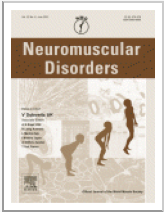 Congenital muscular dystrophy (CMD) comprises a rare group of genetic muscle diseases that present at birth or early during infancy. Two common subtypes of CMD are collagen VI-related muscular dystrophy (COL6-RD) and laminin alpha 2-related dystrophy (LAMA2-RD). Traditional outcome measures in CMD include gross motor and mobility assessments, yet significant motor declines underscore the need for valid upper extremity motor assessments as a clinical endpoint. This cross-sectional study validated a battery of upper extremity measures in these two CMD subtypes for future clinical trials.
Congenital muscular dystrophy (CMD) comprises a rare group of genetic muscle diseases that present at birth or early during infancy. Two common subtypes of CMD are collagen VI-related muscular dystrophy (COL6-RD) and laminin alpha 2-related dystrophy (LAMA2-RD). Traditional outcome measures in CMD include gross motor and mobility assessments, yet significant motor declines underscore the need for valid upper extremity motor assessments as a clinical endpoint. This cross-sectional study validated a battery of upper extremity measures in these two CMD subtypes for future clinical trials.
For this cross-sectional study, 42 participants were assessed over the same 2-5 day period at the National Institutes of Health Clinical Center. All upper extremity measures were correlated with the Motor Function Measure 32 (MFM32). The Jebsen, the Grasp and Dissociated Movements domains of the QUEST, the MyoGrip and the MyoPinch tools, as well as elbow ROM and myometry were determined to be valid and feasible in this population, provided variation in test items, and assessed a range of difficulty in CMD.
